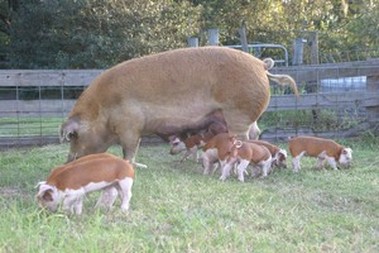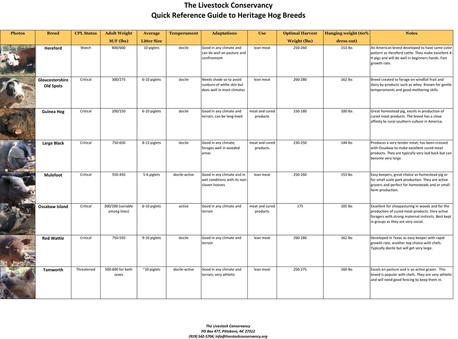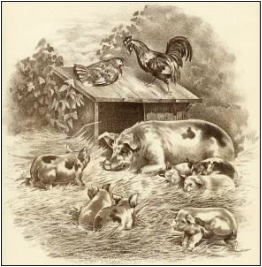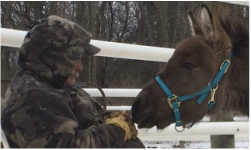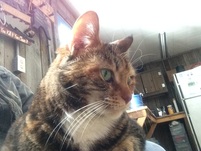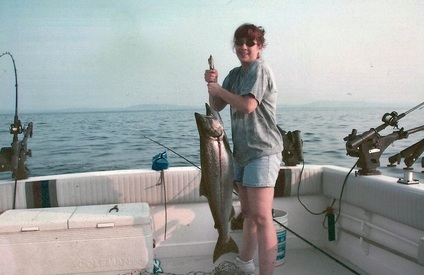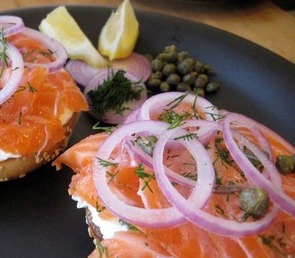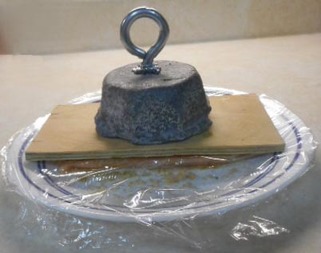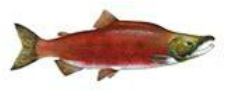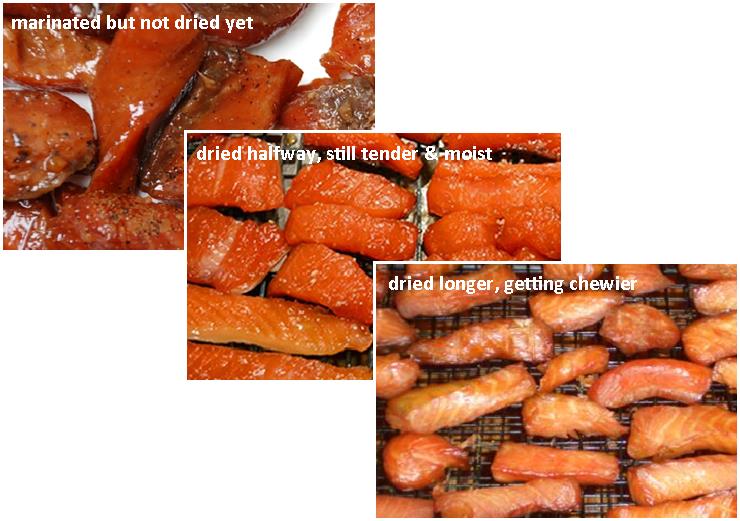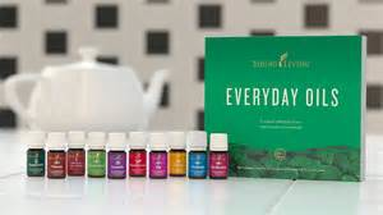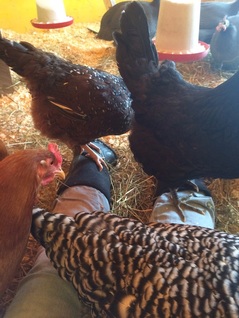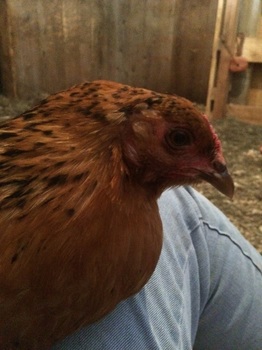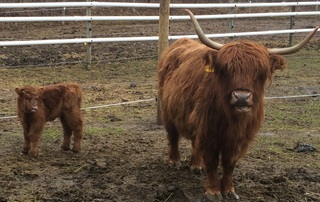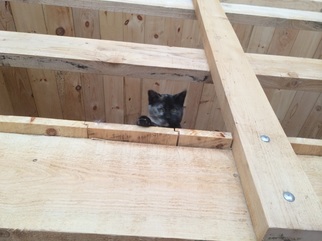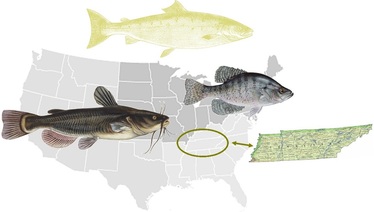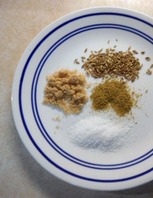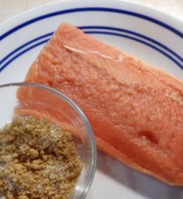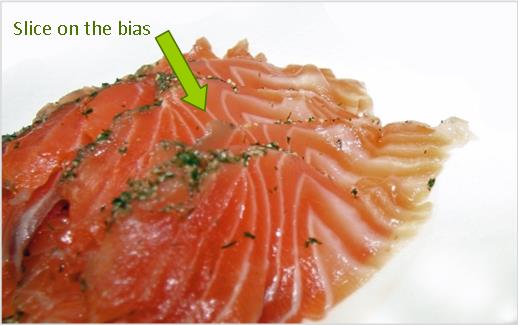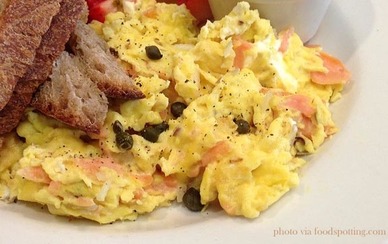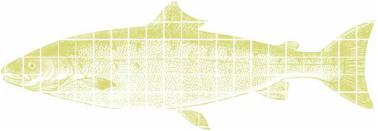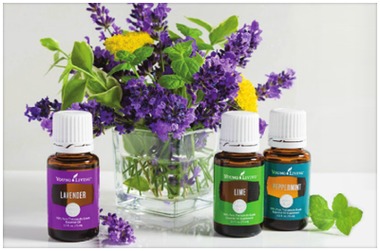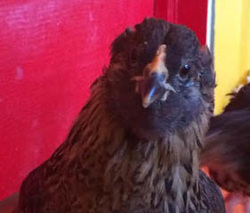HOMESTEADINGThe Heritage Pig Adventureby Mary A. Lainhart
What are Heritage Breeds? The Livestock Conservancy describes Heritage Breeds as “traditional livestock breeds raised by our forefathers. These are the breeds of a bygone era, before industrial agriculture became a mainstream practice. Traditional, historic breeds retain essential attributes for survival and self-sufficiency – fertility, foraging ability, longevity, maternal instincts, ability to mate naturally, and resistance to diseases and parasites.” In a more general sense, heritage animals are the animals that you would find on your great grandparents’ farms. Hereford Heritage Pigs are named for same color pattern on Hereford Cattle, and one of our considerations for our first pig purchase. Noted to be a good pig for beginners, they're docile and very adaptable to climate, pasture or confinement.
The Livestock Conservancy chart below compares heritage hog breeds. Click on the chart to go to a printable PDF page of it.
|
|
The Adventure Begins with Lunch
Buck and I had gone to visit our dear friends, Bob and Sue, last March to catch up with each other. Our morning visit quickly passed into early afternoon. We were invited to stay for lunch. Pork chops were on the menu. I would normally not order a pork chop off a menu if we were eating out. They never make it on my grocery list. But these were not everyday pork chops from your grocery store…our friends raise heritage pigs. Let me digress for a moment….have you ever gone somewhere and had something to eat that was so delicious that you think about it maybe once a month, or more often? Just the thought of eating it that one time, makes your mouth start to water? You can relive the delectable experience in your mind over and over again as if it were yesterday? OK, with that thought in mind, hear this….these pork chops were all of those things described and more. They were the most succulent, tender, juicy, flavorful pork chops I had ever had in my life. Yes….my whole life. So good in fact, that we were given the green light to just pick up the bone and eat the rest of it…don’t be shy about wasting a morsel of it. So, it's been almost a year now since the seed was planted to add a heritage pig or two to the Buck ‘n’ Mule Farm. Since then we've investigated where we can locally get heritage piglets. We've started the research on housing, turn out, fencing, and environmental concerns. We're discussing where on our farm it makes the most sense logistically to put the pigs, for ease of care but without compromising their needs. I recently found the Livestock <Conservancy Chart (at the left) to help us determine which breeds may work for us and which ones won’t based on size, temperament, adaptations and uses. And so a new adventure begins on the Buck 'n' Mule Farm during another cold, long winter... |
WATCH, LISTEN, LEARN
|
|
Mr. Parker (my husband) has been making venison jerky for years. It's good, but pales in comparison to his salmon jerky. Unlike most commercially sold jerky of any description, it's not dried down to leather and should be stored in the refrigerator. We love the smooth texture of the partially-dried salmon. Make it as dry and chewy as you like, but I strongly suggest that you eat a piece halfway through the drying period. You may find you like it better that way. If not, continue drying until it's done to your preference.
You'll need a food dehydrator for this project. Ours is an old, discontinued Equiflow. There are plenty of others on the market at a variety of price points. << The recipe calls for Bragg Liquid Aminos, a liquid seasoning that's available in most health food stores. It looks like and tastes like soy sauce, but less salty and not quite as assertive, so less likely to cover up the flavor of your food. You can also use it as a substitute for Worcestershire and tamari sauce. Used in combination with soy sauce, it's a winner in this recipe. The recipe also calls for fresh ginger. Substitute dried <<ginger if you must, but Gourmet Garden fresh "stir in" ginger works magic with the salmon. The finished jerky doesn't taste like ginger, but if it weren't in the marinade, your jerky would be mediocre at best. I happen to hate peeling and grating fresh ginger root, so we use fresh ginger paste, which is easily found in the produce section of most supermarkets. |
ESSENTIAL OILS
Each month we will share ways on how to safely use essential oils on your equines and your other pets. These are recommendations and not all inclusive uses of essential oils for your animal. Remember, all animals are individuals - so observe their behavior as you use essential oils (or anything) to see how they react to them.
WAYS TO USE ESSENTIAL OILS:
Direct Application
Direct application means applying drops of oil directly to the skin or fur of an animal in a “drop” form. This can be done with neat or diluted oils. Make sure you know the specifics about each oil before you use it on you animal. Do NOT apply HOT oils directly on your animal. (See February Issue about Carrier Oils).
Direct application has great benefits when used in the Young Living Raindrop Technique, and is used that way quite often. It may be used in applications such as dripping oils directly into a wound or abscess, onto a site where acupuncture is to be performed, onto a hoof or any other site of intense need.
To apply topically, put a drop or two of essential oil into your palms (diluting for the size/sensitivity of the individual), rub your palms together and then pet or massage into the desired location. Warning: dropping undiluted essential oils directly onto the skin where they pool in a concentrated space will increase the likelihood of skin sensitivity and skin reactions. If this happens, dilute with any type of fatty oil, NOT WATER! Water is a driver and will increase the absorption rate of the oils, intensifying the sensitivity. NEVER use an essential oil to counter the effects of another essential oil. Again...always use a fatty oil such as Young Living's V-6 oil, olive, almond or coconut oil.
Layering is another topical application technique. With layering, rather than combining several oils together then applying, you apply each oil separately, one after the other, following the same technique as topical application. Wait a few minutes in between each layer to allow it time to absorb.
There are many good places to apply oils topically to equines. The poll/brain stem (mental clairity/focus), TMJ (awareness/proprioception), along the spine (nervous system), over the withers and croup (calming/balancing), around the chestnuts (calming, relaxing), over the sternum (emotional uplift/release/clearing)...all can be acceptable application locations for your equine depending on the goal you have for use of the oil. Applying to the little hollow between the heel bulbs at the back of the pastern, the sternum and under the jaw can be good alternate application locations.
Topical application of photosensitive oils should only be applied to areas of the body that will not receive direct sunlight. Another option is to leave your equine indoors approximately 8 hours after applying such oils or apply at evening time.
“Animals such as dogs, horses, cows, goats, and other large animals accept this form of application the best. For cats and smaller, when direct application of oils is used, it is generally in a diluted form.”1
1 The Animal Desk Reference – Essential Oils for Animals by Melissa Shelton, DVM (Holistic Veterinarian)
Direct application has great benefits when used in the Young Living Raindrop Technique, and is used that way quite often. It may be used in applications such as dripping oils directly into a wound or abscess, onto a site where acupuncture is to be performed, onto a hoof or any other site of intense need.
To apply topically, put a drop or two of essential oil into your palms (diluting for the size/sensitivity of the individual), rub your palms together and then pet or massage into the desired location. Warning: dropping undiluted essential oils directly onto the skin where they pool in a concentrated space will increase the likelihood of skin sensitivity and skin reactions. If this happens, dilute with any type of fatty oil, NOT WATER! Water is a driver and will increase the absorption rate of the oils, intensifying the sensitivity. NEVER use an essential oil to counter the effects of another essential oil. Again...always use a fatty oil such as Young Living's V-6 oil, olive, almond or coconut oil.
Layering is another topical application technique. With layering, rather than combining several oils together then applying, you apply each oil separately, one after the other, following the same technique as topical application. Wait a few minutes in between each layer to allow it time to absorb.
There are many good places to apply oils topically to equines. The poll/brain stem (mental clairity/focus), TMJ (awareness/proprioception), along the spine (nervous system), over the withers and croup (calming/balancing), around the chestnuts (calming, relaxing), over the sternum (emotional uplift/release/clearing)...all can be acceptable application locations for your equine depending on the goal you have for use of the oil. Applying to the little hollow between the heel bulbs at the back of the pastern, the sternum and under the jaw can be good alternate application locations.
Topical application of photosensitive oils should only be applied to areas of the body that will not receive direct sunlight. Another option is to leave your equine indoors approximately 8 hours after applying such oils or apply at evening time.
“Animals such as dogs, horses, cows, goats, and other large animals accept this form of application the best. For cats and smaller, when direct application of oils is used, it is generally in a diluted form.”1
1 The Animal Desk Reference – Essential Oils for Animals by Melissa Shelton, DVM (Holistic Veterinarian)
Mary Lainhart is a Young Living OIls independent distributor because after years of her own successful use of them, she's confident of the purity and quality of Young LIving products. The Everyday Oils™ collection is the perfect beginner's kit, containing ten of Young Living's most popular and versatile essential oils. This kit will become a useful part of your day, everyday.
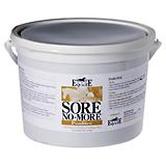
Equilite™ Sore-No-More® Cooling Clay Poultice
Contains Bentonite/Kaolin in a solution consisting of an all-natural proprietary blend of Witch Hazel, Arnica Montana, Rosemary, Lavender, Lobelia and Sodium Borate as an all-
natural preservative.
(Available at the Resources listed below).
Contains Bentonite/Kaolin in a solution consisting of an all-natural proprietary blend of Witch Hazel, Arnica Montana, Rosemary, Lavender, Lobelia and Sodium Borate as an all-
natural preservative.
(Available at the Resources listed below).
We're transplanted Yankees who don't miss much (other than friends and family) about living in the Northeast. We love living in rural America, with cattle as our closest neighbors. We love having the room for our own orchard, vegetable garden, 11 rescue dogs and cats, and privacy that we just couldn't find (or afford) in New England.
But one thing we don't like about Tennessee is that it's land-locked. It's a hunter's paradise, sure, with enough deer, turkey, duck, squirrel and more to fill your dinner table. But here in West Tennessee, fresh fin fish other than catfish, crappie and the occasional bass is hard to come by. Gone are the days of waiting on the dock to buy shellfish straight off the fishermen's boats. Gone are the days of my husband's fishing trips off the Atlantic coast, bringing home a bounty of bluefish, mackerel, salmon...
But one thing we don't like about Tennessee is that it's land-locked. It's a hunter's paradise, sure, with enough deer, turkey, duck, squirrel and more to fill your dinner table. But here in West Tennessee, fresh fin fish other than catfish, crappie and the occasional bass is hard to come by. Gone are the days of waiting on the dock to buy shellfish straight off the fishermen's boats. Gone are the days of my husband's fishing trips off the Atlantic coast, bringing home a bounty of bluefish, mackerel, salmon...
Images courtesy of the Tennessee Wildlife Resources Agency and TheHealist.com
Nowadays we buy grocery store salmon, which is sometimes "fresh", sometimes frozen, too often farm-raised. Not only do we struggle to put the nasties that could hide in farm-raised fish out of mind, it just doesn't taste as good. Wild-caught salmon is very expensive here, be it fresh or frozen. We try to use recipes that boost the flavor and texture of frozen salmon. If you're lucky enough to try these recipes with truly fresh salmon you caught yourself, back off on the seasonings by about 25%.
TenneYankee Gravlax Recipe
1 pound salmon fillet (you can skin it, but we don't bother, and our fish-loving pets are mighty happy about that)
1 cup Kosher (or 3/4 cup table) salt
1/2 cup light brown sugar
2 tablespoons ground fennel seed
1/4 cup chopped fresh tarragon (you can also use a teaspoon of dried tarragon, or skip it altogether; we
much prefer fresh).
Make sure the salmon fillet is bone-free. You may have to pluck out strays with tweezers. Mix the salt, sugar, and fennel in a bowl, then spread about a third of the mixture in a baking dish big enough to hold the whole fillet. Lay the salmon in the dish skin side down. Sprinkle with the tarragon and the rest of the seasoning mixture. Cover the fish completely with plenty of plastic wrap. Place the plywood on top of it, and the weight on top of that. Refrigerate for 24 hours.
Remove the fish from its wrapping and scrape off any seasoning that hasn't been completely absorbed, and discard the fresh tarragon. Before serving, you can rinse the fish if you like (we don't) and pat it dry with paper towels.
To serve, use a very sharp carving knife to slice the fish on the bias as thinly as possible. Serve it with toasted bagels, cream cheese, thinly sliced onion, lemon wedges, and a sprinkle of capers. It's also a tasty garnish for hard-boiled or deviled eggs, green salad, served alongside an omelet or scrambled eggs, in Eggs Benedict instead of Canadian ham, with latkes (potato pancakes) and sour cream, or all by itself as a quick and yummy snack. I'd have to think hard to imagine a way to eat gravlax that isn't wonderful. Well, maybe not with fudge brownies...but hey! Try it! You might like it!
Wrap leftovers tightly in plastic wrap and store in the refrigerator for up to 3 days. At our house, gravlax rarely lasts that long!
Click here for a printable copy of the recipe.
1 pound salmon fillet (you can skin it, but we don't bother, and our fish-loving pets are mighty happy about that)
1 cup Kosher (or 3/4 cup table) salt
1/2 cup light brown sugar
2 tablespoons ground fennel seed
1/4 cup chopped fresh tarragon (you can also use a teaspoon of dried tarragon, or skip it altogether; we
much prefer fresh).
Make sure the salmon fillet is bone-free. You may have to pluck out strays with tweezers. Mix the salt, sugar, and fennel in a bowl, then spread about a third of the mixture in a baking dish big enough to hold the whole fillet. Lay the salmon in the dish skin side down. Sprinkle with the tarragon and the rest of the seasoning mixture. Cover the fish completely with plenty of plastic wrap. Place the plywood on top of it, and the weight on top of that. Refrigerate for 24 hours.
Remove the fish from its wrapping and scrape off any seasoning that hasn't been completely absorbed, and discard the fresh tarragon. Before serving, you can rinse the fish if you like (we don't) and pat it dry with paper towels.
To serve, use a very sharp carving knife to slice the fish on the bias as thinly as possible. Serve it with toasted bagels, cream cheese, thinly sliced onion, lemon wedges, and a sprinkle of capers. It's also a tasty garnish for hard-boiled or deviled eggs, green salad, served alongside an omelet or scrambled eggs, in Eggs Benedict instead of Canadian ham, with latkes (potato pancakes) and sour cream, or all by itself as a quick and yummy snack. I'd have to think hard to imagine a way to eat gravlax that isn't wonderful. Well, maybe not with fudge brownies...but hey! Try it! You might like it!
Wrap leftovers tightly in plastic wrap and store in the refrigerator for up to 3 days. At our house, gravlax rarely lasts that long!
Click here for a printable copy of the recipe.
Mr. Parker's Salmon Jerky Recipe
1/4 cup Bragg Liquid Aminos
1/4 cup soy sauce
2 tablespoons light brown sugar
1/4 teaspoon fresh ginger paste
1 teaspoon liquid smoke
1 teaspoon black pepper
1 tablespoon lemon juice
approximately 1 to 1-1/2 pound fresh salmon fillet
Combine the first 7 ingredients in a zip-lock plastic bag. Cut the salmon into strips about 2" x 3". The size of the strips in inches is less important than the size as you "eyeball" it, because uniform pieces will absorb the marinade and then dry more evenly. Add the salmon to the marinade. Seal the bag and refrigerate for 3 hours. Drain the salmon in a colander and pat it dry with paper towels.
Turn your dehydrator on to a low setting. Lay the salmon pieces evenly on the machine's racks, put the racks in the dehydrator, and dry the salmon for 1-2 hours. Then turn the salmon pieces over and dry for another 2-3 hours. The drying time will depend on your personal preferences. The salmon will go through a progression like the illustration to the left. We usually sample the fish in the last hour or so of drying, and remove the jerky from the machine when it's dried to our liking - still soft and moist, just a little chewy.
Store the jerky in a clean zip-lock bag and keep refrigerated. We eat it just the way it is as snacks, or as a substitute for gravlax, on top of a cream cheese covered toasted bagel, or with scrambled eggs, or in green salad...Mr. Parker claims it'd be wonderful with ice cream, but I draw the line at that.
Click here for a printable recipe.
1/4 cup soy sauce
2 tablespoons light brown sugar
1/4 teaspoon fresh ginger paste
1 teaspoon liquid smoke
1 teaspoon black pepper
1 tablespoon lemon juice
approximately 1 to 1-1/2 pound fresh salmon fillet
Combine the first 7 ingredients in a zip-lock plastic bag. Cut the salmon into strips about 2" x 3". The size of the strips in inches is less important than the size as you "eyeball" it, because uniform pieces will absorb the marinade and then dry more evenly. Add the salmon to the marinade. Seal the bag and refrigerate for 3 hours. Drain the salmon in a colander and pat it dry with paper towels.
Turn your dehydrator on to a low setting. Lay the salmon pieces evenly on the machine's racks, put the racks in the dehydrator, and dry the salmon for 1-2 hours. Then turn the salmon pieces over and dry for another 2-3 hours. The drying time will depend on your personal preferences. The salmon will go through a progression like the illustration to the left. We usually sample the fish in the last hour or so of drying, and remove the jerky from the machine when it's dried to our liking - still soft and moist, just a little chewy.
Store the jerky in a clean zip-lock bag and keep refrigerated. We eat it just the way it is as snacks, or as a substitute for gravlax, on top of a cream cheese covered toasted bagel, or with scrambled eggs, or in green salad...Mr. Parker claims it'd be wonderful with ice cream, but I draw the line at that.
Click here for a printable recipe.
Peace & Calming for your Equine
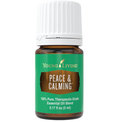
Peace and Calming is a Young Living proprietary blend created by Young Living that may help reduce stress and anxiety, as well as calm tensions and uplift the spirt, promoting relaxation and a deep sense of peace. The ingredients in this blend provide a powerful mix of benefits to calm the nervous and/or agitated horse. It includes tangerine (helps release stress and nervous irritability), orange (calming), ylang ylang (instills confidence and promotes positive emotions), patchouli (dispels negativity) and blue tansy (used to combat anger and negative emotions). This blend has anti-inflammatory properties and helps boost the immune system.
Rub Peace and Calming on the horse's chest to promote relaxation and to reduce fear or panic. For pets Peace and Calming may build confidence in new environments. It can also be useful for fear, anxiety, behavior problems, car rides, if animal is wounded, or for over-excitement. Use with Valor for added positive effects. Rub on the bottom of the paws, behind the ears or on the inside of the collar.
CAUTION: Contains citrus oils which can cause photo-sensitivity.
Rub Peace and Calming on the horse's chest to promote relaxation and to reduce fear or panic. For pets Peace and Calming may build confidence in new environments. It can also be useful for fear, anxiety, behavior problems, car rides, if animal is wounded, or for over-excitement. Use with Valor for added positive effects. Rub on the bottom of the paws, behind the ears or on the inside of the collar.
CAUTION: Contains citrus oils which can cause photo-sensitivity.
Peace & Calming for You
Peace and Calming can be used to invoke the same sense of relaxation and deep sense of peace that it does in your equine or pet. Peace and Calming can be used aromatically or topically. You can diffuse, inhale directly, dilute with V-6 Vegetable Oil Complex, or apply topically.
Peace & Calming Essential Oil Uses
Peace & Calming Essential Oil Uses
- Diffuse this oil to freshen the air, especially in rooms where children play or study.
- Apply to the bottom of feet before bed as part of a bedtime ritual for your whole family.
- Dilute with V-6™ Vegetable Oil Complex for a calming back massage before naps or bed.
- Combine with Citrus Fresh™ for a bright, invigorating scent that’s perfect for mornings before school or practice.
- Add 4–5 drops to 1 cup Epsom salt for a calming bath at the start of the day or as part of an evening routine.
- Add to Young Living Bath & Shower Gel Base for a cleanser your entire family will love..
RESOURCES FOR HOMESTEADERSYoung Living Essential Oils - www.youngliving.com
Equine and animal supplies for well being - www.valleyvet.com, www.statelinetack.com, www.horse.com, http://www.horsehealthusa.com/ DISCLAIMERThe information contained on this website is not meant to diagnose, treat, cure, or prevent any disease. The information on this website represents what I have chosen to do to take charge of my own personal health and that of my family. Statements on this website have not been evaluated by the Food and Drug Administration. If you are pregnant, nursing, taking medication, or have a medical condition, consult your physician before using these products.
Information found on this website is meant for educational and informational purposes only, and to motivate you to make your own health care and dietary decisions based upon your own further research and in partnership with your health care provider. |
